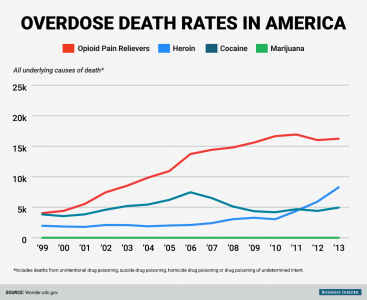Analgesic Medication and Exercise
Analgesic medication is a category of drug that is meant to cause the cessation of pain within an individual. Because of the effect that analgesic have on the body, these types of medication are more commonly referred to as painkillers. They can come in both prescription form and over the counter form, and are typically used by individuals who have experienced some type of injury or who suffer from painful diseases.
As with all medication, there are positives and negatives associated with usage of analgesic medications. One study set out to determine the effects of opioid usage on activities of daily living (ADL). The medication used in the study was the buprenorphine transdermal delivery system (BTSD), and this medication was evaluated for its effectiveness in helping patients with chronic low back pain (CLBP) perform ADL’s. The results showed that those individuals with CLBP who wore the BTSD patch experienced a reduction in pain and a significant improvement in abilities to carry out ADL’s [1]. The BTSD could benefit those who wish to implement a strengthening or stretching regime because it ultimately reduces pain and allows increased participation in ADL’s. Athletes often take analgesic drugs to relieve soreness after exercise. An uncommon positive side effect that can go along with using analgesic medication is increased time to exhaustion during exercise in the heat. The article: Mauger, A.R., Taylor, L., Harding, C., Wright, B., Foster, J., & Castle, P.C. 2014. Acute acetaminophin (paracetamol) ingestion improves time to exhaustion during exercise in the heat. Experimental physiology 99(1). p. 164-171, states that acute acetaminophen ingestion lead to significantly increased time to exhaustion when exercising in hot conditions. The authors hypothesized that this could occur because acetaminophen possibly decreases the thermoregulatory challenge that occurs when exercising in the heat. This can be useful information when working with athletes who have to compete in hot weather conditions. A couple common analgesic drugs that can be found over-the-counter and are taken post-exercise are ibuprofen and acetaminophen. Although these drugs have been suggested to relieve muscle soreness after exercise, they may have negative physiological effects as well. Typically, after exercise, muscle protein synthesis increases, leading to hypertrophy of the involved muscles. In a study done by Trappe, White, Lambert, Cesar, Hellerstein, and Evans (2002), subjects who had consumed ibuprofen and acetaminophen post-exercise actually experienced weakened protein synthesis. These results suggest that long-term use of analgesic medications such as ibuprofen and acetaminophen may actually decrease the typical hypertrophy that follows eccentric training[2]. Therefore, if an athlete is trying to build muscle, they may not benefit from taking analgesic drugs often. Another important and less well-known physiological effect of analgesic medication on the body is that on the kidneys. Farquhar, Mor gan, Zambraski, and Kenney (1999) suggested that it is safer to consume acetaminophen than ibuprofen because it has less severe renal effects. In individuals who had recently exercised, ibuprofen was more likely to decline renal function[3]. These findings suggest that it may not be safe to consume certain analgesic drugs during exercise in order to maintain the function of the kidneys so that an individual may avoid dehydration during exercise. Analgesic medications can have effects that are not immediately noticed. One analgesic drug in particular, morphine, has latent effects on ventilation. Researchers found that even though morphine may seem to have waned its effect on the bloodstream, it can still linger and compromise the ventilatory processes[4]. Specifically, even after the arterial blood-gas chemistry eventually reaches stability, morphine can inhibit minute ventilation and negatively alter ventilatory responses, especially in cases where oxygen or carbon dioxide levels change drastically[4]. These effects can be devastating for a patient undergoing a rigorous exercise regimen and at potential risk for either hypoxia or hypercapnia. Although analgesic medications effects can relieve muscle soreness, another less known danger is the risk of addiction from opioids and other over the counter medications. According to a fact sheet from the Oklahoma government and the Centers for Disease Control and Prevention deaths from opioid pain relievers have now surpassed deaths from cocaine and heroin [5]. Oklahoma ranks 9th in overdose rates in the United States and according to the 2009 National Survey on Drug Use and Health, Oklahoma ranks first in every age category for the consumption of nonmedical pain relievers. This statistic is noteworthy in the physical therapy professions. Many patients are post-operatively prescribed over the counter drugs, as well as generic analgesics like acetaminophen and ibuprofen. Apart from their exercise side effects, addictions to these drugs can bring cognitive impairment, psychomotor impairment and serious withdrawal symptoms with the end of long term prescriptions [6].
- ↑ Miller K, Yarlas A, Wen W, Dain B, Lynch SY, Ripa SR, et al. The impact of buprenorphine transdermal delivery system on activities of daily living among patients with chronic low back pain: an application of the international classification of functioning, disability and health. Clin J Pain. 2014 Dec;30(12):1015-22.
- ↑ Trappe T, White F, Lambert C, Cesar D, Hellerstein M, Evans W. Effect of ibuprofen and acetaminophen on postexercise muscle protein synthesis. American Journal of Physiology 2002;282:551-6. http://ajpendo.physiology.org/content/282/3/e551.short (accessed 10 November 2015).
- ↑ Farquhar W, Morgan A, Zambraski E, Kenney W. Effects of acetaminophen and ibuprofen on renal function in the stressed kidney. Journal of Applied Physiology 1999;86:598-604. http://jap.physiology.org/content/86/2/598.short (accessed 10 November 2015).
- ↑ 4.0 4.1 May WJ, Henderson F, Gruber RB, Discala JF, Young AP, Bates JN, Palmer LA, Lewis SJ. Morphine has latent deleterious effects on the ventilatory responses to a hypoxic-hypercapnic challenge. Open journal of molecular and integrative physiology 2013;3:134-145
- ↑ http://ok.gov/odmhsas/documents/PR%20RxAbuse-FactSheet.pdf
- ↑ Zacny, J. P. (1995). A review of the effects of opioids on psychomotor and cognitive functioning in humans. Experimental and Clinical Psychopharmacology, 3(4), 432..
- ↑ Lewis, T. (2015, November). The government is keeping track of these commonly prescribed drugs to help fight a major epidemic. Retrieved from www.businessinsider.com







